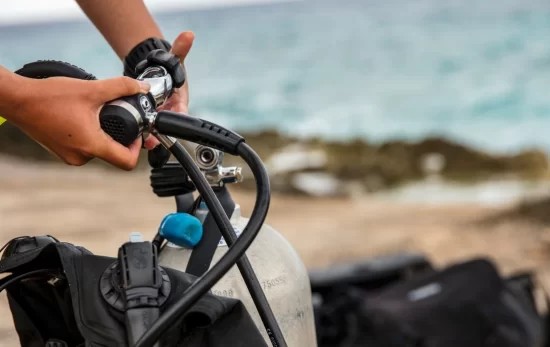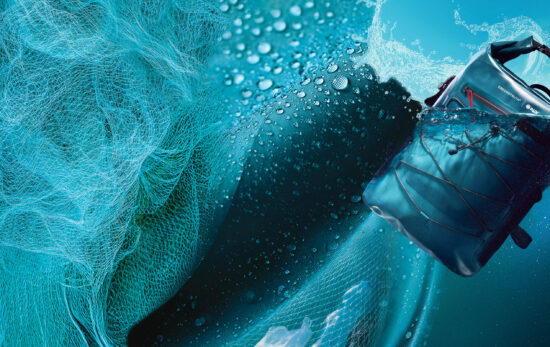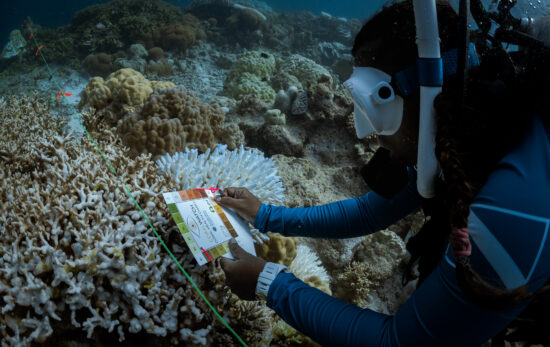You might think only technical or commercial divers need a knife for diving, but all divers benefit from being prepared. Whether you’re a snorkeler or a seasoned scuba diver, carrying a diving knife offers peace of mind and safety.
Read on to learn more about dive knives, including the purpose of a diving knife, how to wear a dive knife, and dive knife care. Visit Scuba Diving Magazine for everything you need to know about various dive knives all in one place, including buyer’s guides, head-to-head reviews and how-to guides
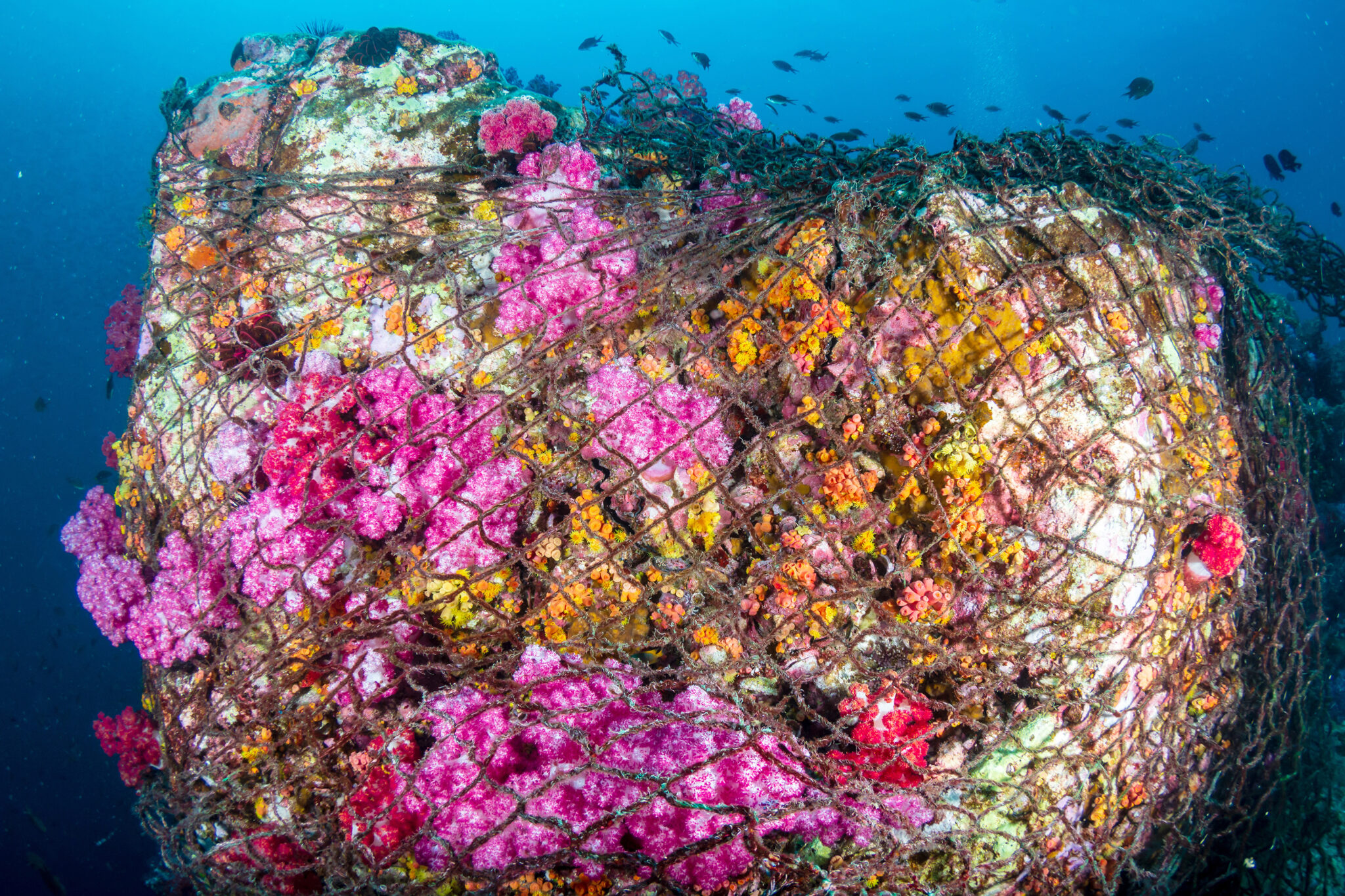
What Is a Dive Knife Used For?
Unlike in Hollywood movies, a diving knife isn’t a weapon for harming people, animals, or reefs. Instead, it’s an essential tool that you can use to free yourself, your gear, and even marine life from entanglements, such as seaweed, ropes or fishing nets.
A diving knife is also a handy accessory above and below the surface. For instance, you can cut through snagged SMB lines or tap on your tank to get your buddy’s attention.
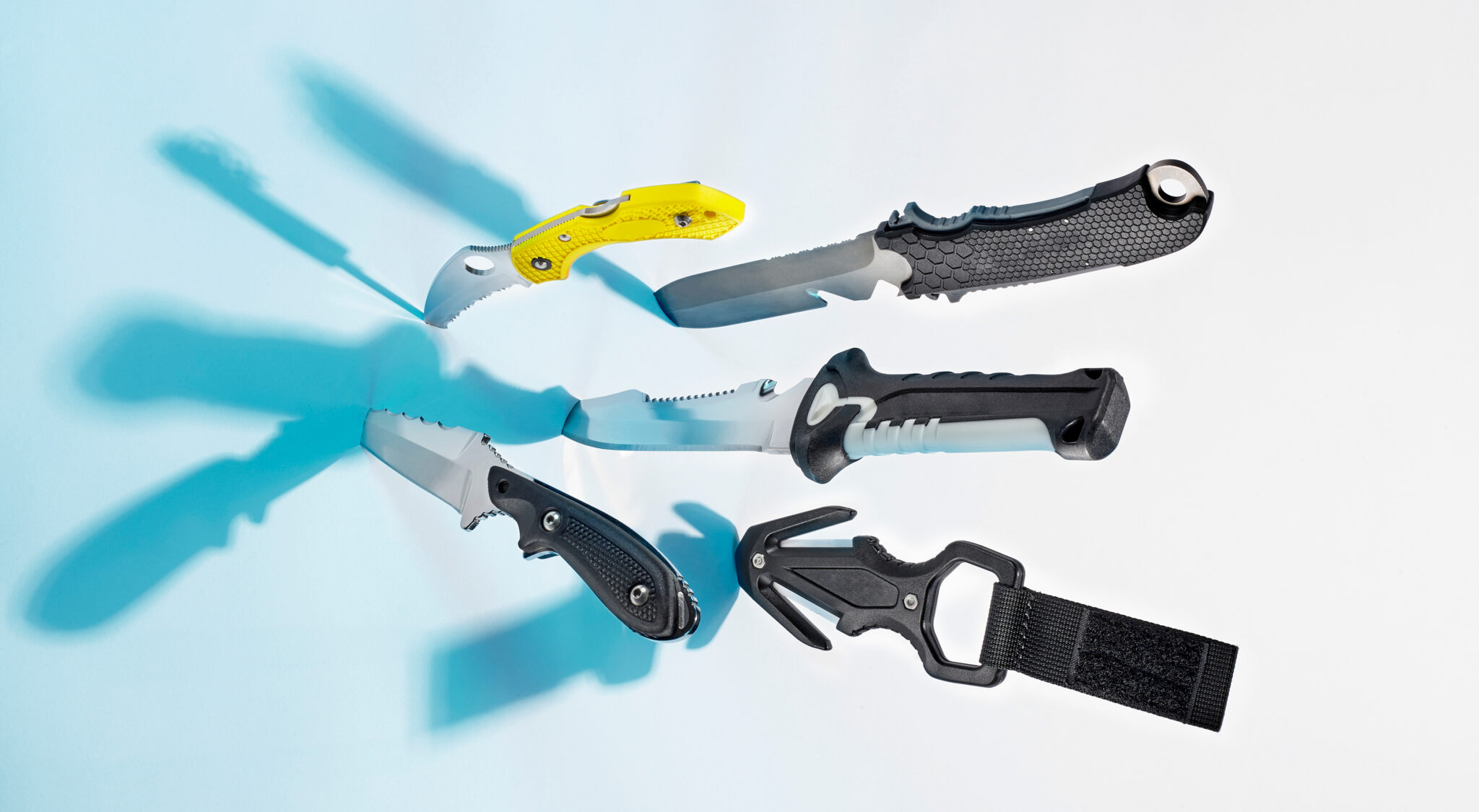
Diving Knife Types and Blades
Traditional dive knife designs usually have a double-edged blade, which can be fixed or folded into the handle. The straight edge is ideal for cutting plastic or nylon lines, while the serrated edge excels against thicker, natural fibers or kelp.
Fixed blades are sturdier and quicker to use in an emergency, but they need a sheath for safe stowage. Meanwhile, folding blades fit neatly inside a pocket but can be trickier to open, especially single-handedly or with gloves.
Some diving knives also feature a line-cutting notch along the blade, while bigger knives may have a T-shaped handle that doubles as a tank banger.
Other cutting tools for diving include:
- Z knives (line cutters): A hooked design and guarded blade provide a faster, safer way of cutting fishing nets and lines.
- Shears: Similar to scissors, these are useful for snipping lines with greater accuracy.
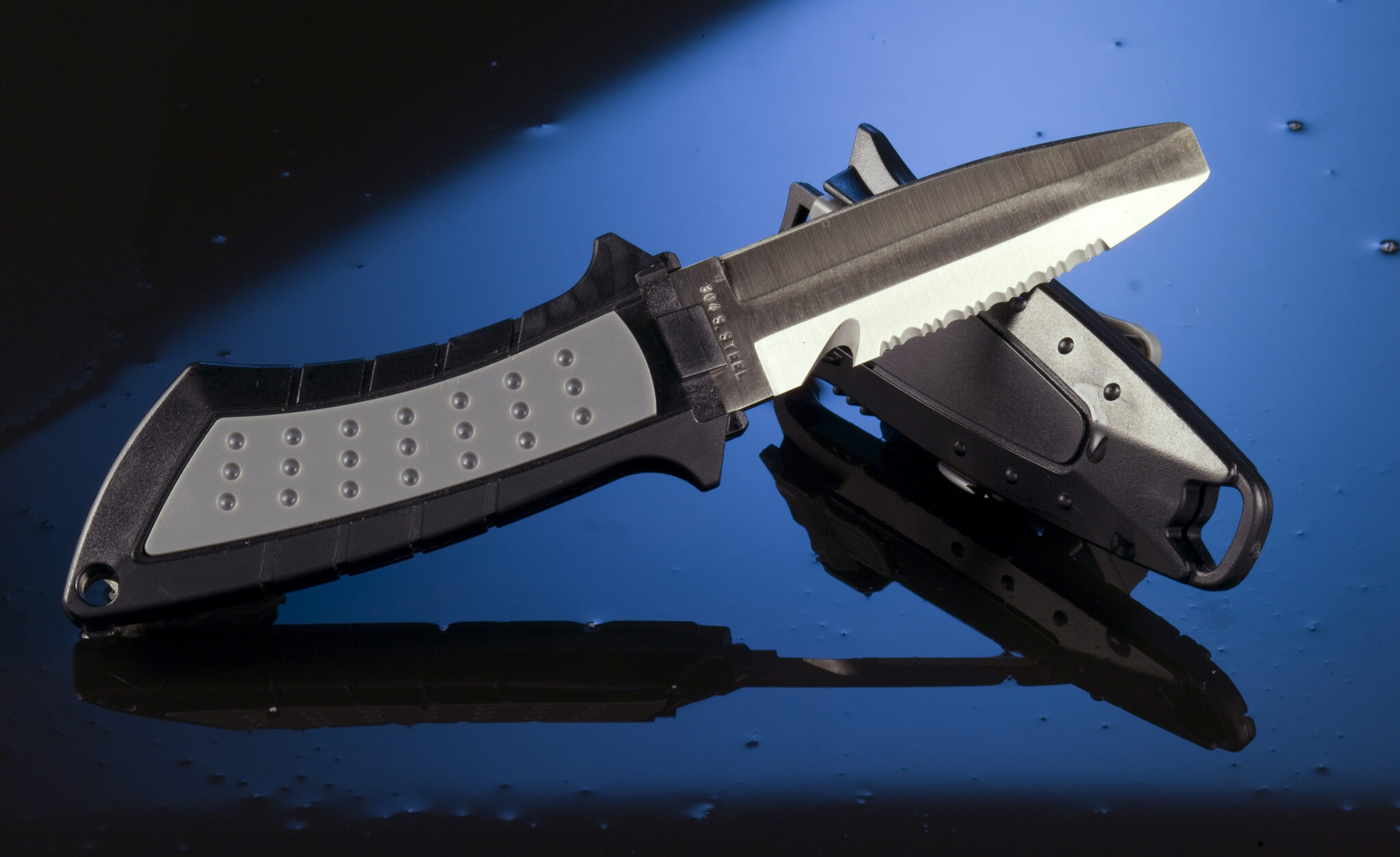
Why Do Dive Knives Have Blunt Tips?
Although some types of diving knife have a pointed end, a blunt tip diving knife (or chisel tip) is less of a stabbing implement and more of a multi-purpose tool. In recreational diving, its main perk is safety; there’s a much lower risk of puncturing yourself, your gear, or even your buddy!
Why Do Diving Knives Have Holes?
Holes in a dive knife’s handle are typically used for attaching lanyards, clips, or straps. Along the blade, a shackle key is a long, thin slot for manipulating shackles. Folding knives often include a finger hole to make them easier to open and close.
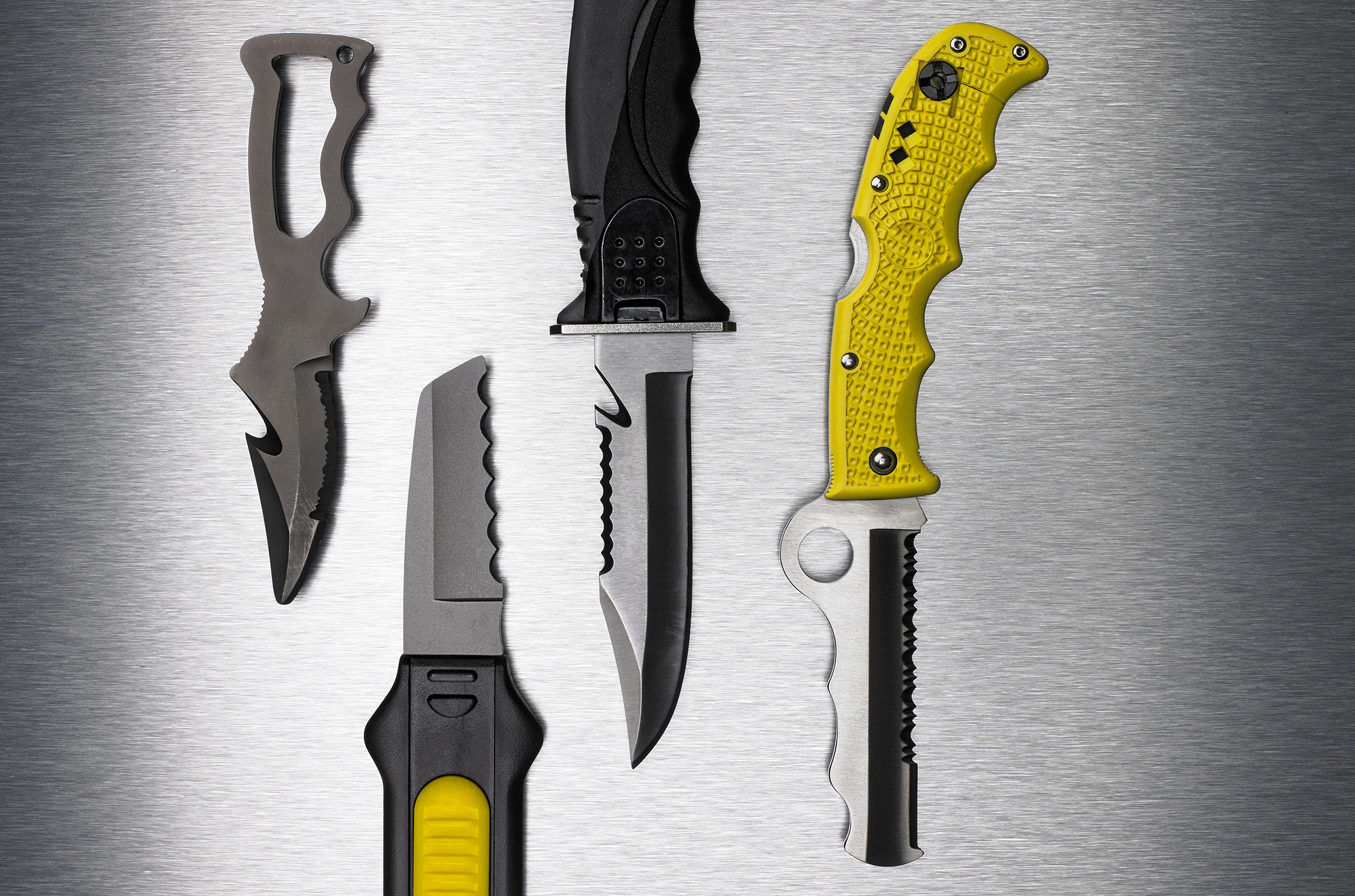
What Is a Dive Knife Made Of?
The blade is made from metal, and when it comes to the best diving knife material, the top contenders are titanium vs stainless steel:
- Stainless steel is more common, cheaper, and easier to sharpen, but more prone to corrosion.
- Titanium is stronger, lighter, and rustproof, but harder to sharpen and more expensive.
Meanwhile, the dive knife handle is generally plastic or metal with a rubber coating for added grip. Depending on its size, the sheath might be plastic, metal, or fabric.
Do Dive Knives Rust?
Compared to everyday knives, stainless steel dive knives (especially marine grade) are reasonably resistant to corrosion, and titanium knives are completely rustproof. Nevertheless, saltwater is harsh on all metals, and even the highest-quality dive knife will deteriorate if you don’t look after it.
Wash your dive knife in freshwater after every dive, and make sure it’s dry before storage. Applying a thin layer of silicon grease on the blade can help to prevent rusting – just avoid petroleum-based lubricants, as they can erode other parts of your dive kit.
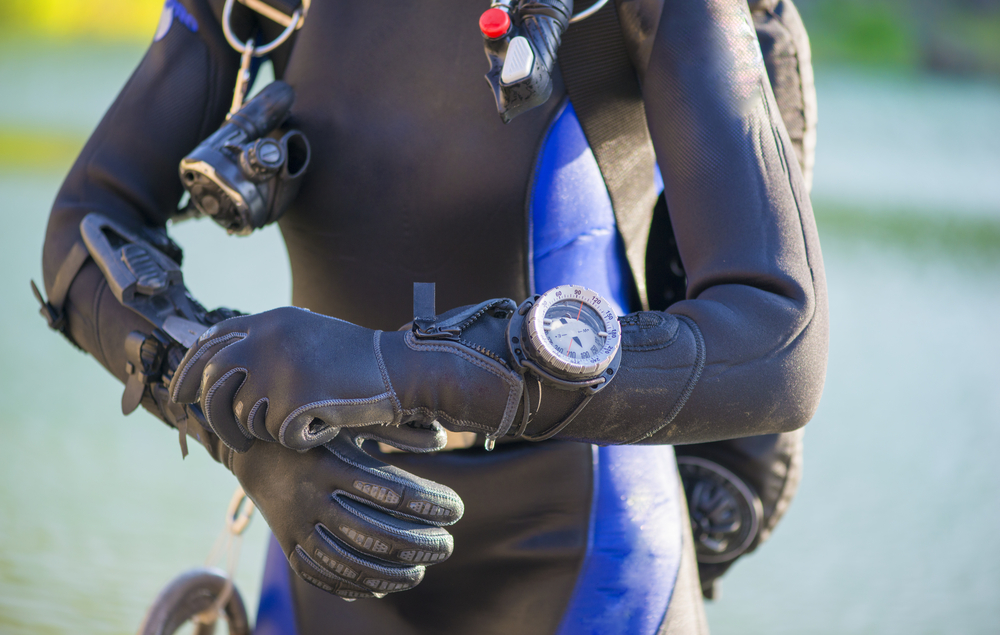
What Size Dive Knife Do I Need?
It’s a myth that a giant diving knife is always better. In fact, a small (2-3 inches/5-7 centimeters) or medium (4-5 inches/10-12 centimeters) knife is the most popular choice for recreational diving. These sizes tend to be lightweight and easier to store, dive, and travel with. Plus, they’re less likely to snag on your equipment or surroundings.
That said, the optimal diving knife length depends on your personal choice and how you plan to wear it.
How To Wear a Diving Knife
When choosing where to wear a dive knife, make sure:
- It’s secure.
- It won’t create a snag hazard.
- You can easily reach, release, and re-stow it – ideally with one hand.
Beyond that, dive knife placement is a matter of size and preference. A large diving knife may be more comfortable strapped to your leg, while smaller or folding styles might fit inside a pocket — though bear in mind that both options can be awkward to reach.
Alternatively, you can mount a compact diving knife sheath close to your upper body, such as on a BCD hose, on a wrist strap, or using purpose-made grommets. However, avoid wearing your dive knife on a weight belt as it might obstruct a quick release in an emergency.

Can I Take a Diving Knife on a Plane?
Yes, but like any sharp object, you must pack your dive knife in checked luggage, not your cabin bag. Store it folded or in its sheath so it can’t damage other items. As an extra precaution, consider packing it inside a protective case or towel.
Are Dive Knives Legal Everywhere?
A diving knife is still a knife, so it could be illegal in some places. Additionally, many marine protected areas don’t allow knives. Do check local laws and regulations about carrying or using one on the surface, when traveling to your destination, or during the dive itself. A local PADI dive shop can also offer guidance on the region’s diving rules.
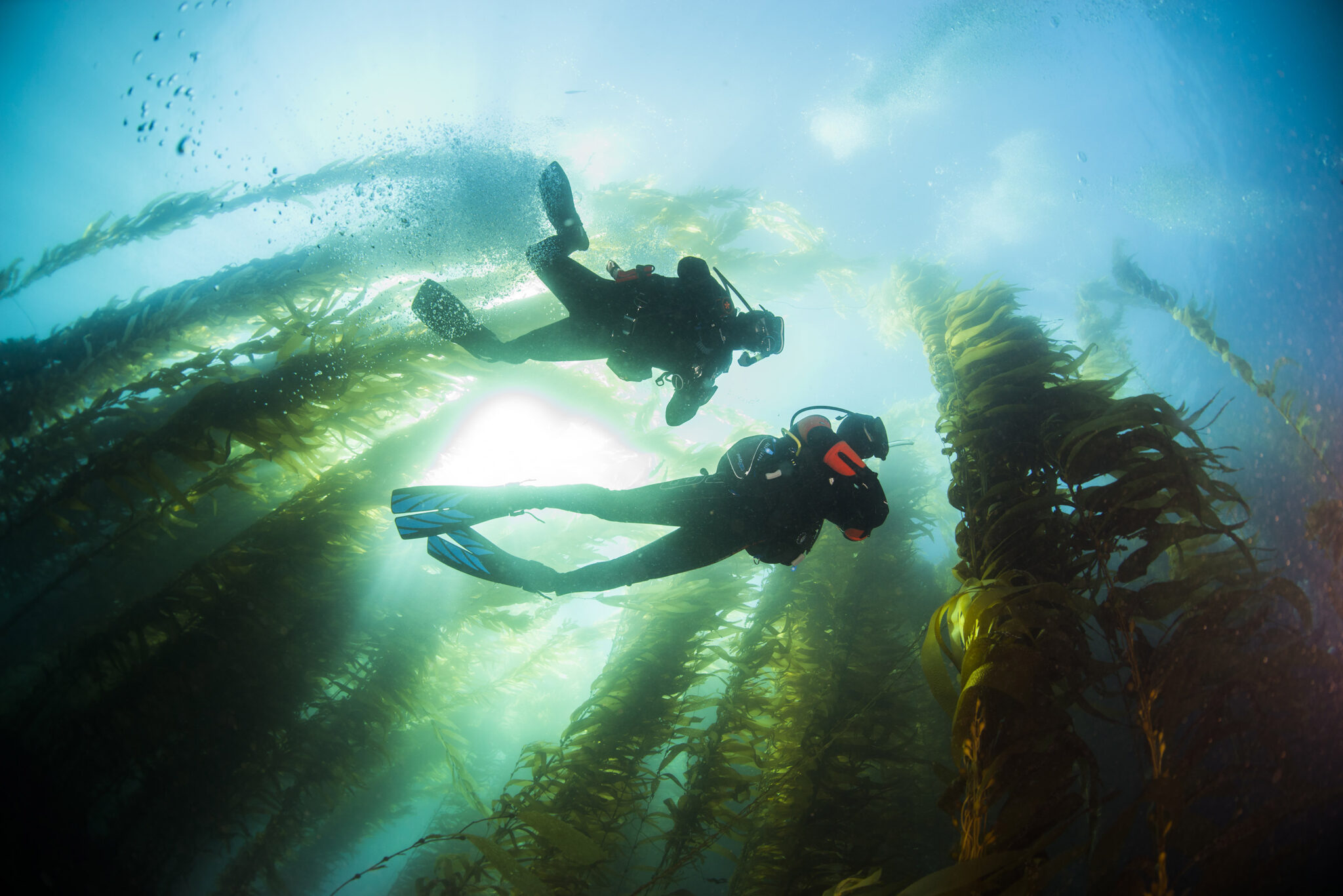
How To Choose a Dive Knife
Deciding what makes a good dive knife is a personal choice, but think about:
- The type of diving you do. For example, a line cutter can be invaluable around wrecks or other areas known for fishing nets, while a larger, serrated blade is effective at detangling kelp.
- How you plan to wear it. This will narrow down suitable options for style, size, and attachments.
- Whether you travel often. If so, a folding or small diving knife might be more convenient.
In addition, your ideal knife should be comfortable to wear and hold, as well as easy to release and put away. If you use dive gloves, remember to test the knife while wearing them.
If you can’t choose between a dive knife or shears, then opt for both! Many divers carry a standard dive knife alongside a separate line cutter or shears. Plus, having a cutting tool accessible on either side of your body adds an extra layer of safety.
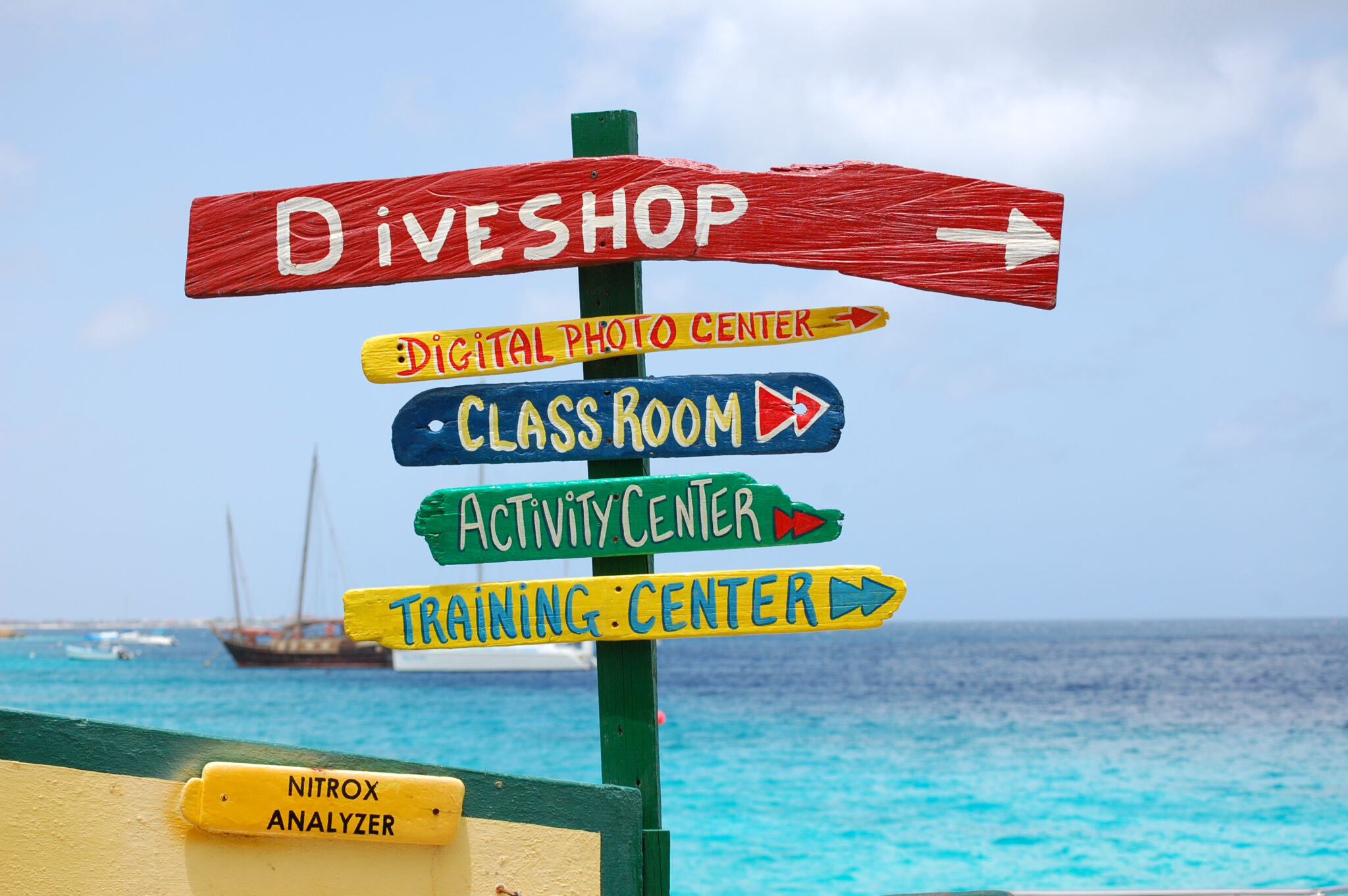
Want To Learn More About Diving Knives & Scuba Gear
Whether you’re seeking the best scuba diving knife, an affordable diving knife, or a dive knife for snorkeling or freediving, a subscription to Scuba Diving® magazine can help. You’ll get 10 subscriptions a year delivered to your door (or inbox if you live outside the USA), and each one is packed full of info about scuba gear for divers.

